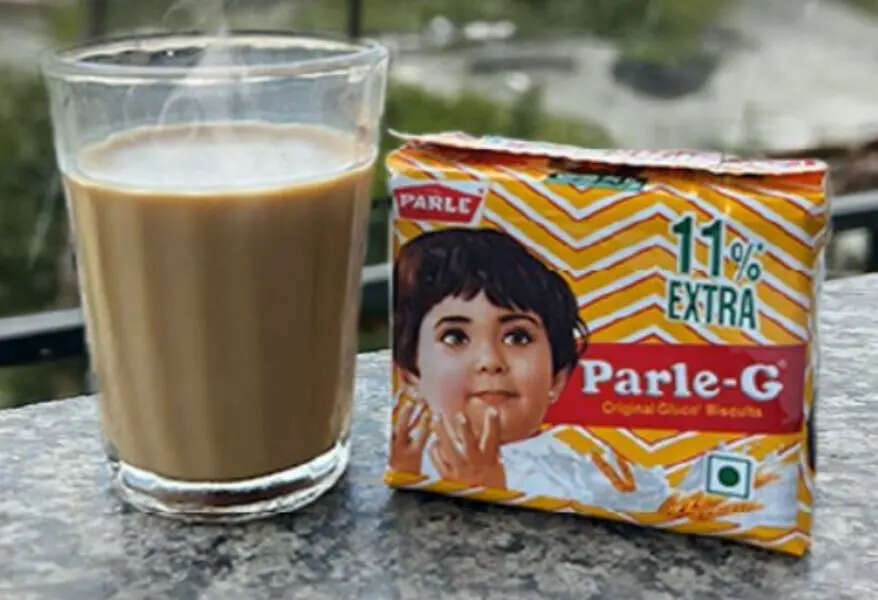Our Terms & Conditions | Our Privacy Policy
How Parle-G’s Origins Are Tied To India’s Freedom Struggle And World War II — The Untold Story Of Mohanlal Dayal’s Patriotic Biscuit Revolution | Food
From Swadeshi Spirit to Global Legacy: How Mohanlal Dayal’s Parle-G Biscuits Became a Symbol of Nourishment During India’s Independence Movement and WWII
If you’ve spent any part of your childhood in India, chances are there’s a Parle-G memory tucked away somewhere. Maybe it’s the image of steam curling up from a cup of chai as you timed that precarious dunk — the moment just before the biscuit surrendered and slid into the depths. Or perhaps it’s the crinkle of that yellow packet, torn open in secret before anyone else could get their share. And then, of course, there’s this wide-eyed little girl on the Parle-G packet.
Yet, behind Parle-G lies a saga far richer than its flavourful, sugary, wheat-flour heart. It is a story flavoured with patriotism, stirred by wartime necessity, and baked with an unshakable dream of self-reliance. Long before it became the planet’s best-selling biscuit, Parle-G had already carved its place in history — as both a quiet act of resistance in the Swadeshi movement and an unlikely companion in the trenches of World War II.
How Did a Freedom Struggle Lead to a Biscuit?
 How Parle Gluco Emerged From the Swadeshi Movement to Become India’s Beloved Biscuit — And Why It Played a Surprising Role in World War II
How Parle Gluco Emerged From the Swadeshi Movement to Become India’s Beloved Biscuit — And Why It Played a Surprising Role in World War II
To understand this humble biscuit’s beginnings, we need to travel back to the early 20th century, when Mohanlal Dayal, heir to a family of silk traders in Mumbai — decided to quit the beaten path. Touched by the Swadeshi spirit, he wanted to push back against foreign imports and build something that Indians could call their own. In those days, even biscuits were largely a British luxury, imported at prices beyond the reach of ordinary families.
Mohanlal’s solution? Learn the craft himself. At a time when crossing continents was no casual affair, he sailed to Germany to study confectionery-making. The trip ended with a bold purchase — a candy-making machine costing a staggering Rs 60,000, a figure that could have easily sunk a lesser man’s fortunes. That gamble planted the seeds for an industry that would soon challenge colonial imports.
When Did Biscuits Come Into the Picture?
The Parle factory first focused on sweets, aiming to rival British-made confections. But by the late 1930s, Mohanlal understood that there’s a gap in the market. India needed a snack that was filling and inexpensive — something that could sit as comfortably in a school tiffin box as it could in a factory worker’s pocket. In 1939, Parle Gluco biscuits were born: These were simple, mildly sweet, wheat-based, and priced for the masses.
Why Did Parle Biscuits March Into a War?
With the outbreak of World War II, supply chains buckled, and imported goods became scarce. The British-Indian Army needed an energy-rich food source that could be produced locally, stored easily, and carried without fuss. Parle Gluco fit the bill perfectly. The biscuits became part of military rations, feeding soldiers on the frontlines while also serving as a quiet reminder that Swadeshi industry could hold its own under global pressure.
From Gluco to G — How the Brand Grew Smarter
By the 1960s, glucose biscuits had plenty of competition, but Parle wasn’t about to fade into the background. The name was shortened from “Parle Gluco” to “Parle-G” — a nod to glucose, yes, but also cheekily promoted as “G for Genius.” The packaging evolved into the now-famous yellow background with a red logo, and the little girl’s face became the brand’s eternal ambassador. Whether she was a real child or simply a creation of the illustrator’s mind has remained one of India’s most enduring advertising mysteries.
 From Silk Trading to Biscuit-Making: How Mohanlal Dayal’s Vision Created Parle-G, Fuelled India’s Independence Dream, and Supported Wartime Efforts
From Silk Trading to Biscuit-Making: How Mohanlal Dayal’s Vision Created Parle-G, Fuelled India’s Independence Dream, and Supported Wartime Efforts
How Big Has Parle-G Become?
From a modest Mumbai factory to a global powerhouse, Parle-G now sells over a billion packets every month. You’ll find it everywhere — stacked in railway stalls, tucked into school bags, accompanying night shifts, and served alongside steaming chai in tiny cups. For millions, it’s not just a snack but a piece of their own life story, woven into moments both ordinary and extraordinary.
More Than Just a Biscuit
Parle-G’s journey is, in many ways, India’s journey — from colonial dependency to self-reliant confidence. Each bite carries a legacy of invention, resilience, and quiet defiance. The next time you dunk one into your tea, pause for a moment. You’re not just tasting wheat and sugar. You’re tasting history, grit, and a century-old dream that refused to crumble.
Images are for reference only.Images and contents gathered automatic from google or 3rd party sources.All rights on the images and contents are with their legal original owners.



Comments are closed.